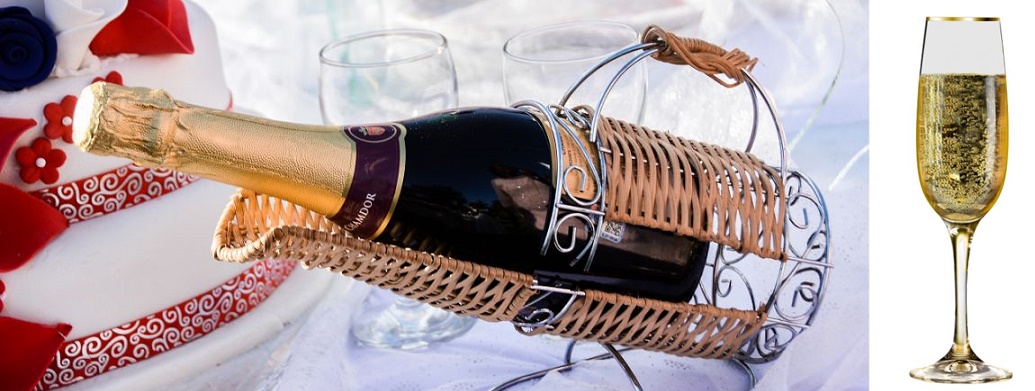Sparkling wine
The German term Schaumwein was first used by the German poet Wilhelm Hauff (1802-1827) in his novel "The Man in the Moon" in 1827 and then first appeared in a dictionary 50 years later in 1876. It is to be understood as an umbrella term or collective term for sparkling wines with a certain proportion of carbon dioxide (often colloquially referred to incorrectly as carbonic acid ).

The higher the proportion and the finer the bubbles, the higher the quality. Good quality is characterised by a pronounced, long-lasting effervescence with the finest, i.e. tiny bubbles bubbles. This can be achieved particularly with the classic production method of bottle fermentation with prolonged yeast ageing.
Types of sparkling wine
Depending on the carbon dioxide pressure, there are basically two quality levels - sparkling wine and semi-sparkling wine:
Sparkling wine
There are three different EU-standardised quality designations. A sparkling wine with added carbon dioxide is produced from wine or country wine to which carbon dioxide has been added in whole or in part. It must have a carbon dioxide pressure of at least 3 bar at 20 °Celsius. If the carbon dioxide comes exclusively from a second fermentation (in a tank or bottle), the designation sparkling wine may be used.
Quality sparkling wine with the base product quality wine must have a minimum carbon dioxide pressure of 3.5 bar (up to 6 bar can be achieved) at a temperature of 20 °Celsius and an alcohol content of at least 9.5% vol. It must also have been produced with at least 60 days of lees storage.
semi-sparkling wine
A slightly foaming (sparkling) product of lower quality is semi-sparkling wine with less carbon dioxide pressure (1 to 2.5 bar) and coarser bubbles. There are many country-specific designations (see below). To avoid confusion with quality sparkling wine, the cork must not be fixed with an agraffe (wire basket). These criteria also have an influence on the sparkling wine tax, which is not levied at semi-sparkling wine. Sparkling wines are sealed with a normal cork and are usually fixed with a spago (cord) in Italy.
Country-specific designations
There are many country-specific names, but only the names Cava and Champagne are protected. The origin of the name sparkling wine has its own history, which is described in detail.
Country |
Quality sparkling wine |
Explanations |
semi-sparkling wine |
| Australia | Sparkling Wine | also in other countries | Pearl Wine |
| Germany | Sparkling wine, Crémant, Winzersekt | Sparkling wine, Crémant in many countries | semi-sparkling wine Frizzante, Secco |
| France/Champagne | Champagne | protected origin | Pétillant |
| France/Champagne | Crémant, Vin mousseux | outside the Champagne region, Crémant also in other countries |
Pétillant |
| Greece | Afrodis Oinos | - | Frizzante |
| Italy | Spumante, Satèn, Talento | Spumante and Frizzante also in other countries |
Frizzante, Rosecco, Vivace |
| California/USA | Sparkling Wine | also in other countries | - |
| Croatia | Pjenušca | - | - |
| Austria | Sparkling wine, Crémant, Hauersekt | - | semi-sparkling wineFrizzante, Secco |
| Portugal | Vinho Espumante | - | Vinho Frisante |
| Russia | Shampanskoye | EU protest against the... |
Voices of our members

Serious sources on the internet are rare - and Wine lexicon from wein.plus is one such source. When researching for my articles, I regularly consult the wein.plus encyclopaedia. There I get reliable and detailed information.
Thomas Götz
Weinberater, Weinblogger und Journalist; Schwendi